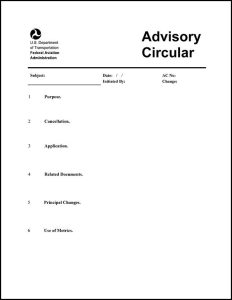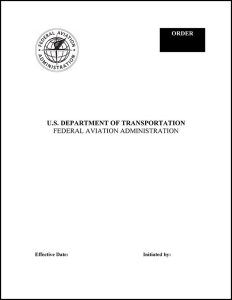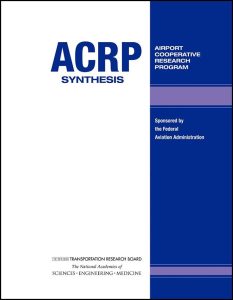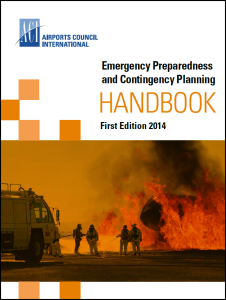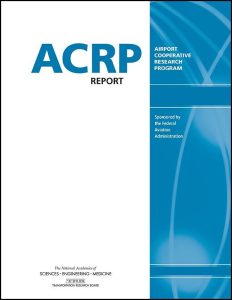To narrow the library of airside resources, use the filter boxes or airport map below or search box above.
Click an item below to expand.
Resources Matching Your Search
2021
This resource is a webpage that provides information on the Electronic Code of Federal Regulations (e-CFR) Title 14, Chapter I, Subchapter G, Part 139, which contains guidance on certification, airport certification manual, and operations.
2009
This advisory circular (AC) provides guidance to the airport operator in the development and implementation of an airport emergency plan (AEP). The AEP addresses essential emergency-related and deliberate actions planned to ensure the safety of and emergency services for the airport populace and the community in which the airport is located.
2004
This advisory circular (AC) provides methods acceptable to the administrator for showing compliance with the Airport Certification Manual requirements in Title 14, Code of Federal Regulations (CFR) Part 139, Certification of Airports.
2016
This order provides FAA personnel with the policies, standards, and procedures for conducting the Airport Certification Program. This order helps ensure standardization and uniformity in the application of the program and in enforcing Title 14 Code of Federal Regulations (CFR), Part 139, Certification of Airports (Part 139). Chapters include administration; certification process; airport certification manual; inspection process; compliance and enforcement policy; accident investigation responsibilities and procedures; inspector training, qualifications and credentials; petitions for exemptions; participation in safety-related activities; program evaluations, staff visits and staff regional liaisons; and reports, correspondence and records.
2011
This advisory circular (AC) contains information based on the minimum ARFF vehicle requirements established by Title 14 Code of Federal Regulations (CFR) Part 139, Certification of Airports. The AC is also based on the FAA additions, exemptions, or amendments made to National Fire Protection Association (NFPA) 414, Standard for Aircraft Rescue and Fire Fighting Vehicles (2007 edition) (as referenced in Appendix A of this document) and NFPA 1901, Standard for Automotive Fire Apparatus (2009 edition).
2017
This program guidance letter (PGL) establishes a process by which an FAA Region may consider (and the Washington headquarters may approve or disapprove) an airport operator's request for AIP funding in support of ARFF equipment (and, by extension, supporting facilities) beyond the minimum requirements set forth in Part 139. Because the FAA established the minimum ARFF requirements under Part 139 to protect the safety of the traveling public, the FAA has developed this process to ensure that under unusual circumstances, additional ARFF equipment might qualify for additional consideration.
2012
ACRP Synthesis 32 highlights current airport and agency—primarily U.S. Forest Service—practices, policies, and procedures at airports called upon to support aerial wildland firefighting suppression efforts.
2013
ACRP Synthesis 45 presents information on mutual aid agreements, addressing nearly every type of emergency that could affect airports and require outside resources. The report is designed to assist airport operators in creating and sustaining effective emergency management mutual aid partnerships by documenting the specifics of existing agreements.
2014
This handbook brings together best practices, knowledge, and experience from airports around the world. The handbook helps airport operators develop and implement a robust airport emergency plan, including the restoration of operations after an emergency. It also deals with business continuity planning. The handbook covers the roles and responsibilities of airport operators, as well as the coordination of emergency response plans with other organizations interfacing with the airport during an emergency. This resource is available from the ACI store for $125 for members and $1,000 for non-members.
2009
This advisory circular (AC) furnishes general guidance for airport employees, airport management, and other personnel responsible for aircraft rescue and firefighting (ARFF) operations at the scene of an aircraft accident on the proper preservation of evidence. It explains the need for the preservation of evidence and details operational actions that may be permitted, if performed in the interest of preserving life.
2008
This advisory circular (AC) contains information, references, and guidelines for aircraft rescue and firefighting (ARFF) station building design. This AC sets the policy for federally funded fire stations that meet Federal Aviation Regulations, Title 14 Code of Federal Regulations (CFR) Part 139, Certification of Airports requirements for airport facilities.
2015
The FAA recommends the guidelines and standards in this advisory circular (AC) for aircraft rescue and firefighting training programs. In general, the use of this AC is not mandatory. However, for airports certificated under Title 14 Code of Federal Regulations, Part 139 (14 CFR part 139), this AC is required.
2010
This advisory circular (AC) provides FAA standards and recommendations for the training of airport firefighting and rescue personnel in the proper operation and tactical use of aircraft rescue and firefighting (ARFF) vehicles and ARFF vehicles equipped with high reach extendable turrets (HRETs).
2004
This advisory circular (AC) provides guidance on aircraft fire extinguishing agents and provides an acceptable methodology for complying with Title 14, Code of Federal Regulations, Part 139, Certification of Airports.
2010
The FAA recommends the guidance and specifications in this advisory circular (AC) for the design, construction, and operation of an ARFF training facility. In general, the use of this AC is not mandatory. However, the use of this AC is mandatory for the design, construction, and operation of ARFF training facilities funded through the Airport Improvement Program (AIP) or the Passenger Facility Charge (PFC) Program.
2019
The FAA Reauthorization Act of 2018 stated that the FAA administrator, no later than October 2021, in coordination with the administrator of the Environmental Protection Agency, aircraft manufacturers, and airport operators, shall not require the use of fluorinated chemicals in aqueous film-forming foam (AFFF). This provision does not impact the current use of fluorinated foams. This program guidance letter (PGL) provides background on the FAA's research into non-fluorinated foams for use by aircraft rescue and firefighting.
2014
ACRP Report 103 provides suggestions for the integration of the National Incident Management System (NIMS) into airport response plans for incidents, accidents, and events. The guidebook discusses common NIMS and incident command terminology, outlines recommended incident command structures for various situations relative to their complexity, and includes sample plans from airports and training outlines.
2013
ACRP Report 88 is designed to help airports identify needs and assess current capabilities with respect to using geographical information systems (GIS) in emergency management (EM). The report discusses GIS and EM and provides a roadmap for airports to move from their current state of GIS implementation (even if they do not yet have any form of GIS) to the point of integrating into EM and coordinating with mutual aid partners. The report contains a CD-ROM with case studies and key lessons learned from airports that have integrated GIS into EM.
2013
ACRP Report 94 provides information for use by operations, public safety and security, and information technology staff at airports of all sizes to evaluate and implement web-based collaboration tools that provide a common operating picture for day-to-day operations and full emergency response management. The report provides a better understanding of the functions of web-based emergency management systems and aids airports in establishing requirements, procuring and installing systems, and implementing training.
2019
ACRP Report 16, second edition, is designed to help airport practitioners, owners, operators, managers, and policymakers of small airports, who may have varying degrees of experience and backgrounds, to fulfill their responsibilities in such areas as financial management, oversight of contracts and leases, safety and security, noise impacts, community relations, compliance with federal and state obligations, facility maintenance, and capital improvements. The first edition has been edited and reformatted for currency, relevance, and usability and updated with additional information and new subject areas (e.g., unmanned aircraft systems, geographic information systems, digital notices to airmen, social media, and federal and state obligations). Also, hyperlinks to many of the documents and resources mentioned in this report, such as ACRP publications, industry sources, and sample checklists, have been collected into ACRP WebResource 6: Resources for Managing Small Airports.

